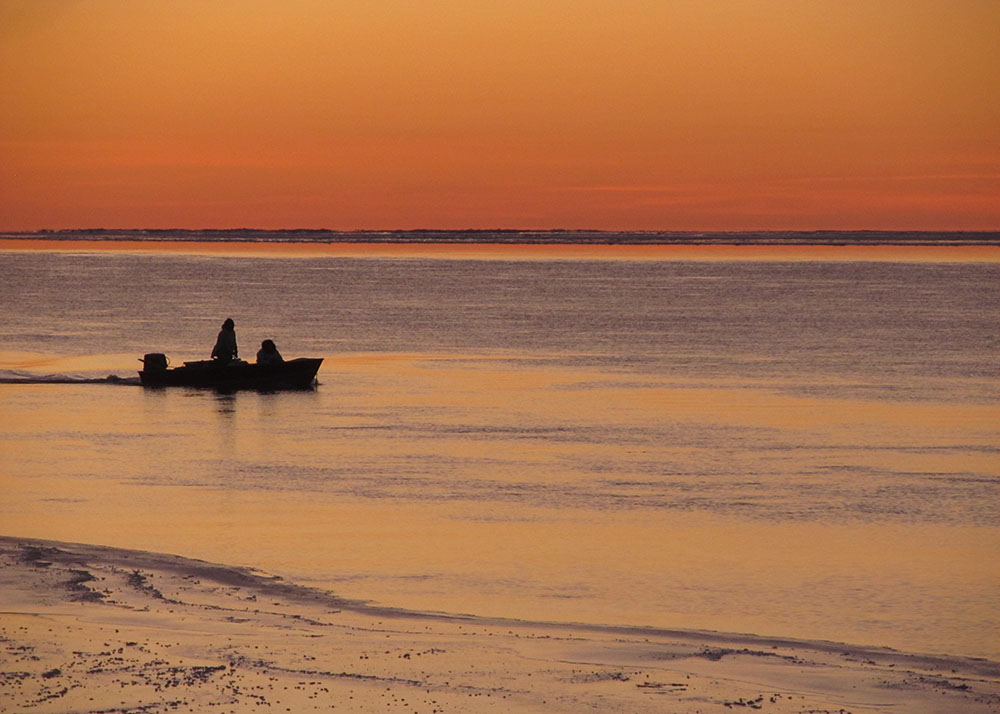When Rapid Climate Change Gets Even Faster
Finding ways to protect Arctic waters, species and communities in the face of a rapidly changing climate

In the area surrounding the Bering Strait, the winters of 2017-18 and 2018-19 were scary even by recent standards of rapid change. Sea ice was missing from the northern Bering Sea in mid-winter, bowhead whales stayed north of the Bering Strait for much of the winter and seals were absent from much of their usual range. Without the protection of the ice, coastal communities were exposed to big waves from winter storms, causing extensive damage in some cases.
Summer seasons have also been bizarre. Hunters in Kotzebue, Alaska, report offshore water temperatures of 64°F, far above the usual near-freezing waters of only a few years ago. Five times as many juvenile Arctic cod thronged the Chukchi Sea in the summer of 2017 than were found in 2012, and pink salmon numbers in the northern Bering Sea were double those of any previous year on record. Harmful algal blooms are now being seen in the region, posing a threat to wildlife and humans alike.
I worked recently with 19 other scientists to put together the many pieces of change we are seeing in the region. Our results have just been published in Nature Climate Change. The story is still unfolding, but we did not want to wait until later to try to make sense of something that had already happened. We wanted to draw attention to the changes now, while they are underway and we can still study and learn.
There is much we can learn by paying close attention to the nature of ecosystem change. We knew the region was one of the fastest-warming on the planet, but we still did not expect such rapid loss of sea ice and warming of water. Physical changes will lead to biological changes and both will affect human communities, but we do not really know how these changes cascade through an ecosystem.
Of course, rapid changes are more than just a scientific curiosity. They have far-reaching consequences. And scientists are not the only ones sounding the alarm.
In December 2019, Indigenous peoples from the northern Bering Sea region contributed to the Arctic Report Cards issued annually by the National Oceanic and Atmospheric Administration. After listing the many things changing in their home regions, this team of authors wrote:
“Our young children today are seeing so much change, but it is difficult for them to understand the pace. We are losing so much of our culture and connections to the resources from our ocean and lands.”
If our climate were the only thing changing, the challenge would be big enough. But commercial shipping, resource development, fisheries, tourism and more, are increasing too. They bring with them the potential for jobs and revenue, but also the likelihood of further disruption to the fishes, birds and marine mammals whose abundance provides for coastal residents.
As a scientist, my work is to document and try to understand these changes. In my role at Ocean Conservancy, I try also to find ways to protect Arctic waters, species and communities. Combatting climate change will take global action, which is important. More locally, we can also push for adequate protections from industrial activities, for sensible conservation measures that sustain the abundance that Arctic peoples depend on, and for greater awareness of how much is at stake, for the Bering Strait and for the world.